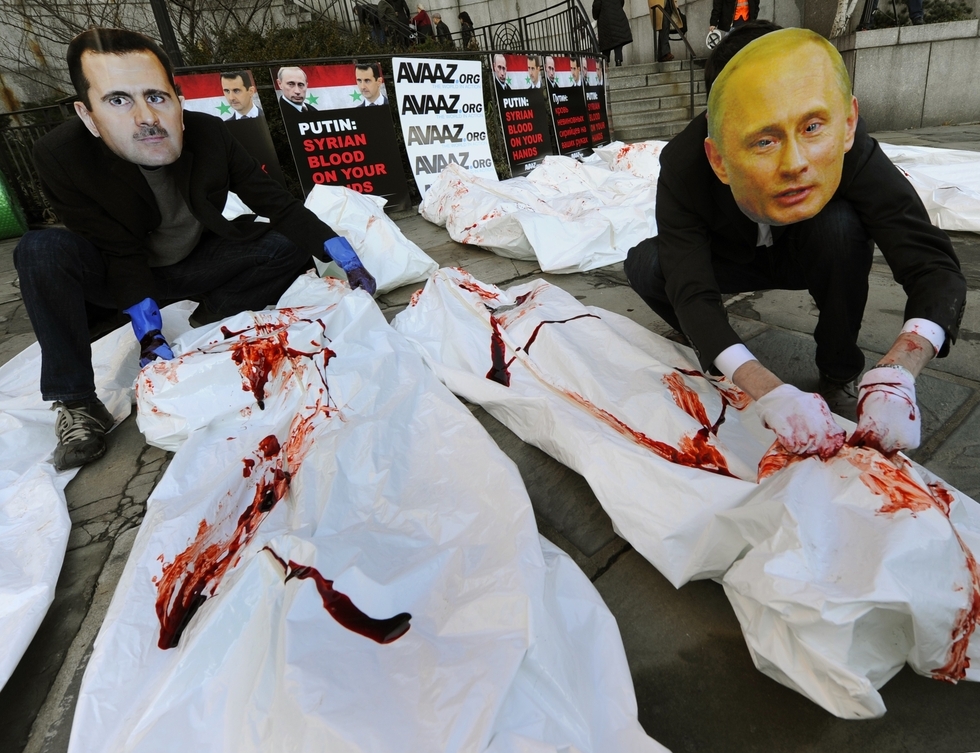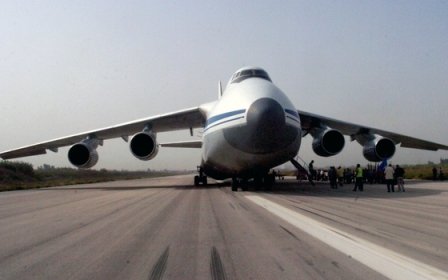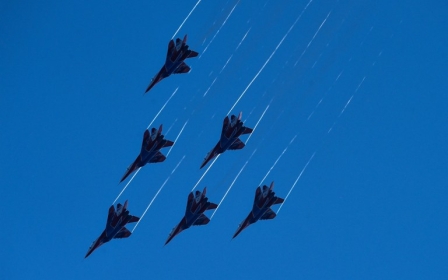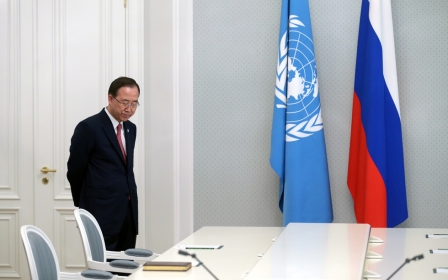Russia's win-win game in Syria

Recent reports have confirmed that Moscow has sent equipment to Syria to build a military base in Latakia under the pretext of fighting the spread of Islamic State militants (ISIS). But this is not a simple case of further military aid to empower the Bashar al-Assad regime. Rather, it is a political move aimed at safeguarding Russia’s present and future interests in Syria regardless of the fate of Assad himself.
Russia’s move may be bold but Moscow has been benefitting from the West’s lack of a strategy to end the Syrian conflict. The resulting continued existence of ISIS has allowed Russia to paint its involvement in Syria as a way to stand up to this threat.
But if Russia regards ISIS as a threat, one must question why Moscow reportedly did not respond to the Syrian air force’s repeated requests for sending needed fighter jet spare parts to the T4 military airport near Palmyra in the run up to the ISIS takeover of the area. This indicates that for Russia, the pros of the existence of ISIS outweigh the cons.
The anti-ISIS regional stakeholders have responded to the rise of the extremist group through empowering different Syrian rebel groups - Islamist in the north and secular in the south - that are in turn in competition with one another. This has enlarged divisions among the opposition.
ISIS also serves to weaken the Syrian opposition because it continues to primarily attack rebels not the regime. Russia itself is also using ISIS as an excuse to tackle areas in which Syrian rebels are making progress. Reports claim that recent Russian military aid to Syria is being sent to Hama, an area that could potentially fall to rebels.
Assad cannot win
But Russia can see that even with increased military support, the Assad regime cannot win the war. Therefore, the reason behind Moscow’s concentration on the Sahel area - a regime stronghold - in sending military equipment boils down to political motivation and forward planning.
The timing of the sending of this aid is important. After a series of unsuccessful attempts to bring the opposition and the regime to agree on measures meant to establish mutual trust - like local ceasefire agreements that never materialised - the United Nations’ special envoy for Syria, Staffan di Mistura, has widened the scope of his bilateral and multilateral talks with regime and opposition figures alike as well as with international stakeholders in the Syrian conflict. The talks have increased in the run-up to the looming United Nations General Assembly (UNGA) meeting later this month. While there is no deal on Syria in sight yet, he has demonstrated seriousness in trying to find a settlement.
Di Mistura’s activities have also coincided with the passing of the Iranian nuclear deal. While Iran is not yet ready to move to discussions with the West on Syria, the nuclear deal paves the way for such talks in the future. Russia’s military aid is therefore a preemptive tool meant to put pressure on its political opponents both at the UN and during any future negotiations on the Syrian conflict in order to grant it a significant say in the settlement. It also paves the way for Russia to potentially present a roadmap for the settlement, safe in the knowledge that its interests would now be secure.
The shape of the settlement matters more to Russia than Assad. Although Russia publicly still voices support for Assad, it is more interested in having leverage over the Syrian transitional government regardless of the fate of Assad himself.
Today Bashar al-Assad is benefiting from Russian aid to the army because he has appointed loyalists as interlocutors between the Syrian army and Moscow. It is through these interlocutors that military contracts are drawn up and aid is deployed. But the Syrian army would not collapse were Bashar al-Assad’s role to end, because the army is run by a number of Alawi officers who have the ability to keep together what has remained from this state institution.
These officers have a strong relationship with Russia, and they operate out of regime strongholds in the Sahel and Damascus. Moscow is therefore neither hostage to the figure of Assad, nor is it committed to the boundaries of the Syrian state as it currently stands.
Keeping a foothold
What matters the most to Moscow is having a political foothold in the Levant through guaranteeing the existence of an ally in the region no matter what happens to Assad or to the Syrian map.
The sending of aid to Latakia but not Palmyra indicates that Russia would be satisfied with a reduced territory under the control of a military ally and that is populated by Alawis, other minorities and Russia loyalists from the Sunni community. The mass exodus of refugees and migrants from Syria serves to make governing such territories more manageable. Russia’s interest in Syria is geopolitical rather than geographical.
As such, any aid to the Syrian army is not meant to enable the Syrian regime to regain control of Syria, but serves the purpose of strengthening Moscow’s relationship with this military institution.
Were Assad to be sacrificed as part of any forthcoming negotiations on the Syrian conflict, or were he to be the subject of an insider coup, having the support of the Syrian army would maintain Russia’s leverage in Syria. This is not only because the army might end up playing a political role in the settlement, but also because any post-Assad transitional government would have to unify and empower the Syrian army.
Therefore, Russia’s increased military aid is a shrewd political move that enables it to maintain its interests when a settlement of the conflict takes place, and may well be the first step towards a Russian attempt at “owning” the resolution of the crisis in the absence of initiative by the international community.
-Lina Khatib is a Research Associate at SOAS, University of London.
The views expressed in this article belong to the author and do not necessarily reflect the editorial policy of Middle East Eye.
Photo: Actors from Avaaz wearing masks of Syria's Bashar al-Assad and Russia's Vladimir Putin protest using dozens of fake bloodied body bags outside the UN Security Council building on 24 January, 2012 (AFP).
Middle East Eye propose une couverture et une analyse indépendantes et incomparables du Moyen-Orient, de l’Afrique du Nord et d’autres régions du monde. Pour en savoir plus sur la reprise de ce contenu et les frais qui s’appliquent, veuillez remplir ce formulaire [en anglais]. Pour en savoir plus sur MEE, cliquez ici [en anglais].





